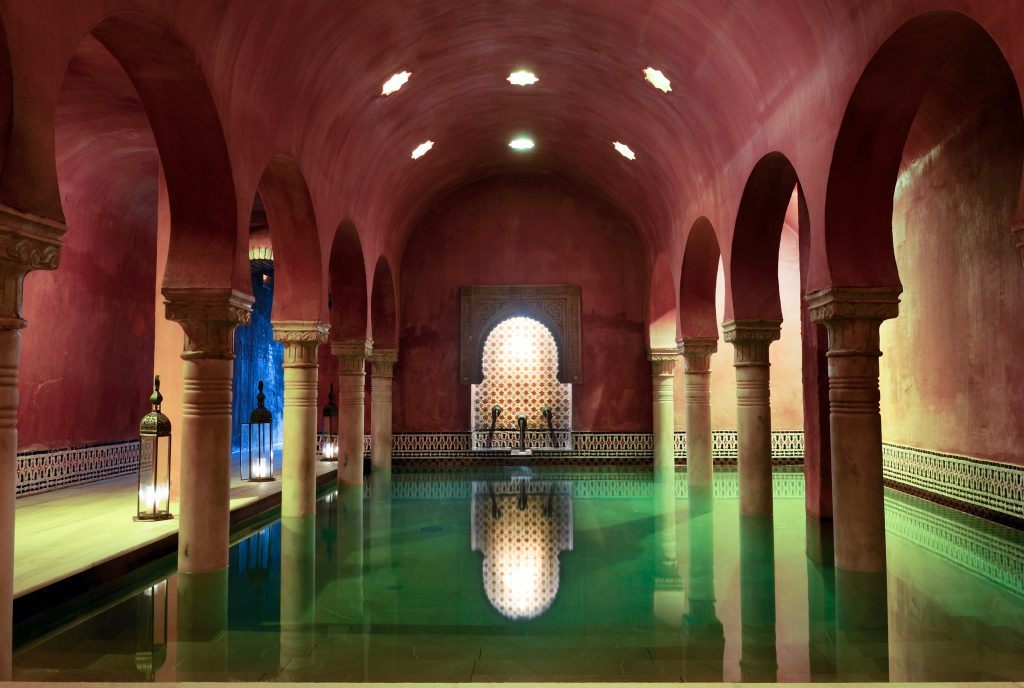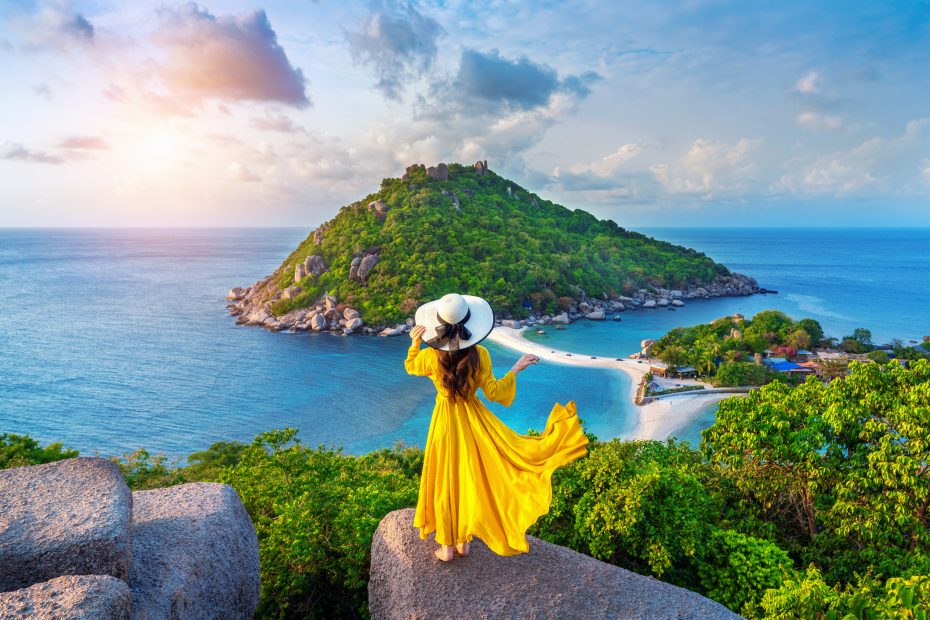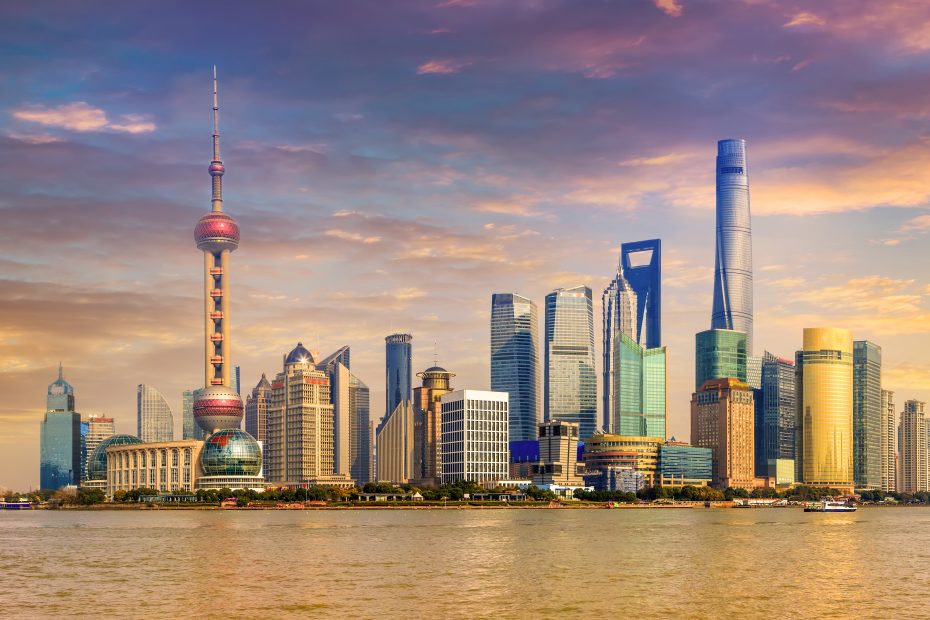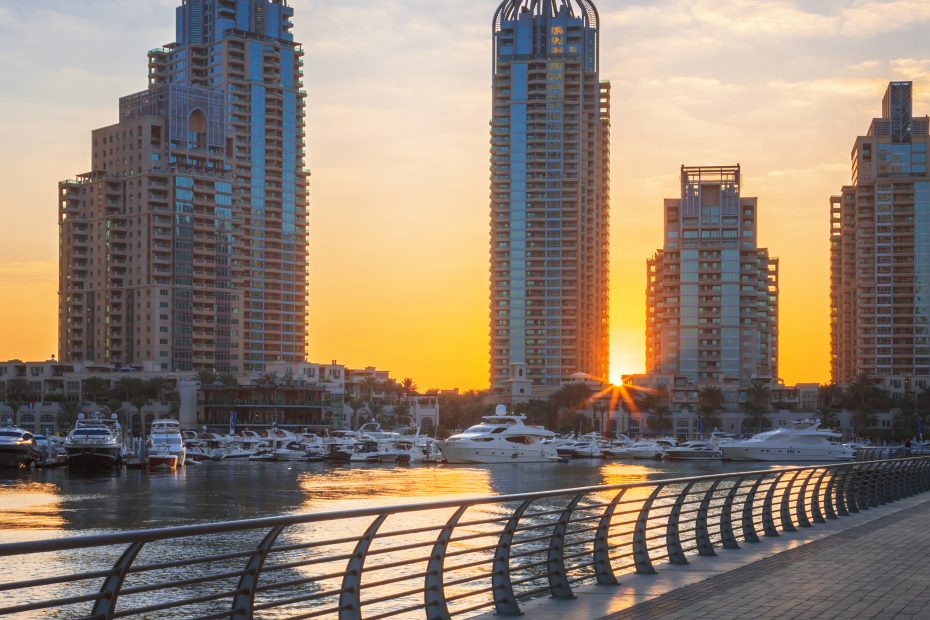The UAE, which stands for the United Arab Emirates, is a sovereign state located in western Asia that follows an absolute monarchy system of governance. It has a total population of approximately 9.2 million people. The country was established on December 2, 1971, and is made up of a federation of seven emirates. These emirates include Abu Dhabi, Ajman, Dubai, Fujairah, Ras al-Khaimah, Sharjah, and Umm al-Quwain. The Federal Supreme Council is formed by the joint governance of the absolute monarchs of each emirate.
Out of the seven emirates that make up the UAE, Dubai attracts the most attention owing to its stunning beaches and modern shopping centers. Over the years, Dubai has transformed into a vibrant hub of the Gulf region and has become a world-renowned destination for tourists seeking fun and excitement. It has earned a reputation as a must-visit stopover location for travelers exploring the world.
History
The Emirates region has a rich history that dates back thousands of years. The harsh desert environment of the area played a significant role in shaping the way of life of its inhabitants, leading to the emergence of nomadic groups known as the “versatile tribesmen.” These groups sustained themselves through various economic activities such as animal husbandry, agriculture, and hunting. As they moved from place to place seasonally, they established settlements and centers, forming tribal groupings that have carried through to modern-day Emirates.
Over time, the influence of various imperial forces, including the Ottoman Empire, Dutch, Portuguese, and British, affected the region. The pearling industry, which brought in a significant income for the people of the UAE, was also impacted by the First World War.
In response, the British established a development office, which oversaw small developments in the Emirates. The seven sheikhs of the Emirates formed a council to coordinate matters between them, taking over the development office in the process. This council was later named the Trucial States Council in 1952.
In 1958, oil was discovered in the region, and its exportation began in 1962. By1966, it was clear that the British government could no longer afford to administer the UAE. As a result, the nine emirates, including Kuwait and Bahrain, were granted independence on December 1, 1971. The seven emirate sultans then joined forces to create the Federal National Council, with Abu Dhabi being established as the capital of the UAE. Today, the UAE is a thriving country with a rich history and a diverse population.
Geography and the landscape
The Middle Eastern country of the United Arab Emirates lies in a strategic location, south of the Strait of Hormuz, which serves as an important transit point for global crude oil. It shares a 530-kilometer border with Saudi Arabia to the west, south, and southeast, as well as a 450-kilometer border with Oman to the southeast and northeast. The UAE’s Khawr al Udayd area borders Qatar, spanning a distance of
approximately nineteen kilometers in the northwest.
The southern coastline of the UAE stretches for over 650 km along the Persian Gulf, with most of the coast being salt pans that extend far inland. While the largest natural harbor is located in Dubai, other ports have been dredged in Abu Dhabi, Sharjah, and other parts of the country.
Climate
The Middle Eastern country of the United Arab Emirates lies in a strategic location, south of the Strait of Hormuz, which serves as an important transit point for global crude oil. It shares a 530-kilometer border with Saudi Arabia to the west, south, and southeast, as well as a 450-kilometer border with Oman to the southeast and northeast. The UAE’s Khawr al Udayd area borders Qatar, spanning a distance of
approximately nineteen kilometers in the northwest.
The southern coastline of the UAE stretches for over 650 km along the Persian Gulf, with most of the coast being salt pans that extend far inland. While the largest natural harbor is located in Dubai, other ports have been dredged in Abu Dhabi, Sharjah, and other parts of the country.
Best way to reach UAE
The United Arab Emirates (UAE) boasts a massive international airport in Dubai and also has international airports located in Abu Dhabi and Sharjah. With Dubai international airport serving as a hub for many flights heading to Western countries, there is no shortage of activity in the airport. Most major airlines, as well as several budget airlines, offer flights to Dubai, and all major cities have flights available to Dubai and other cities within the UAE. Some of the airlines offering budget flights to the UAE include Air India Express, wizz air, Salam air,etc. For those seeking the fastest and most convenient mode of transportation, air travel is the ideal choice for traveling to the UAE.
Major tourist cities of UAE
The United Arab Emirates is continuing to expand its tourism industry and bolster its economy. Among the top tourist destinations in the UAE are the cities of Dubai and Abu Dhabi. Both of these cities have a strong appeal and attract a significant number of visitors each year, contributing to the growth of the tourism sector in the country. Whether it’s the modern skyscrapers of Dubai or the historical landmarks of Abu Dhabi, both cities offer a unique and unforgettable experience for travellers.
DUBAI
The Emirate of Dubai, located on the southeast coast of the Persian Gulf, is the most populous and largest city in the United Arab Emirates. As the capital of the Emirate of Dubai, it has grown into a global city and a thriving business hub of the Middle East. Dubai is also a significant transportation hub for both passengers and cargo. Known for its opulence and luxury, Dubai is the 22nd most expensive country in the world, with hotel rooms that rank as the second most expensive in the world, surpassed only by Geneva. In addition, Dubai has been recognized as the best place to live in the Middle East due to its modern infrastructure, diverse population, and high standard of living.

History
Dubai’s origins can be traced back to the early 18th century when it was a small fishing village. By 1822, the town had a population of around 7-800 people, mostly members of the Baniyas tribe, and was under the rule of Sheikh Tahnoon of Abu Dhabi. However, in 1833, the Al Bu Falasah tribe seceded from Abu Dhabi and settled in Dubai following a period of tribal conflict.
Situated in close proximity to Iran, Dubai soon emerged as an important trade hub, particularly for foreign merchants from Iran. By the turn of the 20th century, Dubai had become a bustling port city.
The discovery of oil in Dubai’s waters in the mid-20th century led to a significant influx of foreign workers and a population boom, with the city’s population increasing by more than 300 percent. Under the leadership of the Sheik of Dubai, the city underwent rapid modernization and expansion of infrastructure,
Dubai joined the other emirates to form the United Arab Emirates, and it has since become one of the most important cities in the Middle East. The city’s focus on oil trade and tourism has fueled its economic growth, with significant revenue being invested back into infrastructure development.
Geography
Dubai is located in the United Arab Emirates and situated on the southeast coast of the Persian Gulf. It shares borders with Abu Dhabi, Sharjah, and the Sultanate of Oman. Hatta, a minor exclave of Dubai, is surrounded by Oman and by the emirates of Ajman and Ras Al Khaimah. The emirate is bordered by the Persian Gulf on the western coast.
Dubai is part of the Arabian Desert and is known for its sandy desert patterns. The sand is mostly crushed shell and coral and is fine, clean, and white. The salt- crusted coastal plains, known as sabkha, can be found east of the city, giving way to a line of dunes running north to south. Further east, the dunes become larger and take on a red hue from iron oxide.
To the west, Dubai is bordered by the Western Hajar Mountains, which rise to around 1,300 metres in some places. The mountain range has a jagged and shattered landscape, making it a popular destination for hiking and trekking. While Dubai has no natural rivers or oases, the city does have a natural inlet called Dubai Creek, which has been dredged to make it deep enough for large vessels to pass through. Additionally, there are multiple gorges and waterholes that can be found at the base of the Western Al Hajar mountains.
Climate
Dubai experiences a hot desert climate, characterized by scorching summers and warm winters. August is the hottest month, with an average high temperature of about 41 °C and a low of 30 °C, while January is the coldest month, with an average high of 24 °C and a low of 14 °C. Throughout the year, the city enjoys mostly sunny days.
Over the past few decades, Dubai has seen an increase in precipitation, with an average annual rainfall of 94.3 millimeters. During summer, the humidity levels are particularly high, leading to uncomfortable conditions for many due to the exceptionally high dew points. Notably, the highest temperature ever recorded in the United Arab Emirates was 52.1 °C in July 2002.
How to reach
Dubai’s international airport is renowned worldwide for its air transport services. It is among the largest airports globally, and nearly all flights heading to Western countries have a layover at this airport. Dubai Airport is bustling with activity, with a plethora of options for travelers to engage in.
Dubai is well-connected to major cities in India through multiple airlines such as Oman Air, Etihad Airways, Air India, and Kuwait Airways, all of which provide affordable flights to Dubai. Furthermore, Dubai is served by a wide range of airlines, including major carriers and budget airlines, making it easily accessible from almost anywhere.
Don’t miss these spots
Burj Khalifa
The Burj Khalifa, standing at a towering height of 828 meters, is the world’s tallest building. This spired skyscraper comprises a viewing deck, hotel, offices, and a restaurant, making it a popular destination for tourists and locals alike. Additionally, the Burj Khalifa is surrounded by an 11-hectare park, offering a serene escape from the bustling city life of Dubai.
Palm Jumeirah
The Palm Jumeirah island, resembling a tree, is famed for its luxurious hotels, upscale apartment towers, and high-end international restaurants. While the Palm Jumeirah Boardwalk offers stunning views of the Dubai coastline and the iconic sail-shaped Burj Al Arab hotel, it is also dotted with food trucks selling popular snacks such as shawarma. In addition, the beach clubs featuring spas and infinity pools transform into lively nightclubs with live DJs in the evenings, making for an unforgettable experience.
Dubai Mall
The Dubai Mall is an enormous shopping and entertainment complex that offers a diverse range of activities. It features department stores, an ice rink, an aquarium, a cinema, and many other attractions. Located in Dubai, it holds the title of the world’s largest mall by total area, providing visitors with an unparalleled shopping and leisure experience.
Dubai creek
Dubai Creek is a briny waterway situated in Dubai that used to stretch up to the Ras Al Khor Wildlife Sanctuary. However, with the introduction of the new Dubai Canal, it now extends all the way to the Persian Gulf. The Creek acts as a boundary, dividing the city into two primary areas, namely Deira and Bur Dubai.
World Island
The World Islands is a man-made archipelago comprised of several small islands arranged in the form of a world map. It is located in the Persian Gulf, approximately 4.0 kilometers away from the Dubai coastline. Visiting this unique attraction provides an opportunity to discover and learn about different parts of the world while exploring a miniature version of it. It’s a win-win situation for those seeking an educational and entertaining experience.
Food in Dubai
Dubai’s cuisine draws inspiration from both Asian and Middle Eastern culinary traditions, resulting in a diverse range of flavour profiles. Dubai offers a plethora of culinary styles, each with its unique twist. Spices are a common ingredient in Dubai cuisine, giving the dishes a touch of heat and flavour.
The city’s cultural diversity has led to the rise of delicious street food. As a melting pot of various cultures, Dubai has seen an influx of immigrant workers who brought with them their own unique cuisines. The street food scene has evolved and is now immensely popular among locals and tourists alike.
It’s worth noting that Dubai is a Muslim country, and therefore, pork is prohibited. You won’t find any shops selling pork meat or dishes with pork as the main ingredient. However, there are plenty of other delectable dishes to try, such as Shawarma, an authentic Emirati dish that is typically served as fast food wrapped in bread.
Discover where and what to shop in Dubai
Dubai has gained a reputation as a shopping destination, attracting both locals and foreigners, including bargain hunters, as it is a tax-free city. The government has taken great steps to provide shoppers with the best experience. Here are some of the top shopping destinations in Dubai.
Dubai Mall
The Dubai Mall is the world’s largest mall, housing over 1,200 shops, 120 cafes and restaurants, 22 cinema screens, a luxury hotel, and world-class entertainment areas. It is a must-visit for anyone looking for a shopping extravaganza.
Mall of the Emirates
The Mall of the Emirates offers a fun and relaxing shopping experience. It is home to an 85-meter-high manmade mountain with snow, which is quite unique in the desert city of Dubai.
Wafi Mall
The Wafi Mall is a pyramid of exquisite artworks. Its stained glass ceiling, creative sculptures, and detailed staircase railing create a beautiful environment for shopping.
Global Village
The Global Village is a hub of products from around the world, where exhibitors from various countries gather to sell their products. It is a great place to find unique items and souvenirs from different cultures.
Karama Shopping Complex
The Karama Shopping Complex is the perfect place to buy souvenirs. Here, shoppers can haggle with vendors to lower prices. Additionally, the 24 murals around the complex add an artsy feel and are a major draw for visitors.
Bur Dubai Souk
The Bur Dubai Souk offers a tapestry of colors and quality fabrics, making it a great destination for purchasing textiles. Shoppers can also find affordable souvenirs at this marketplace.
ABU DHABI
The Emirate of Abu Dhabi, situated on a T-shaped island protruding into the Persian Gulf, serves as both the capital and second most populous city in the United Arab Emirates. It is also the largest of the seven emirates in the UAE. Thanks to its thriving urbanization and swift development, in addition to its population’s relatively high average income, Abu Dhabi has been transformed into a highly advanced and expansive metropolis. As the capital, it serves as the primary hub for political and industrial activities, as well as a significant cultural and commercial center. In fact, roughly two-thirds of the United Arab Emirates economy, which amounts to about $400 billion, can be attributed to Abu Dhabi alone.

History
Abu Dhabi boasts an abundance of archaeological remnants that date back as far as the third millennium BCE, attesting to the presence of various ancient civilizations. The term “Abu Dhabi” translates to “Father of the gazelle” in Arabic.
Initially, Abu Dhabi was a thriving participant in the pearl industry and regularly engaged in trade with other nations. The Persian Gulf was highly regarded for the exceptional quality of its pearls, which were in high demand abroad. During the 19th century, a series of treaties between the sheikhs of the Arab states in the Persian Gulf and Great Britain culminated in Britain exerting significant influence over the region. The primary motivation behind this was to safeguard the trade route to India from piracy. Although Britain withdrew from India in 1947, its sway over Abu Dhabi remained as the area’s oil reserves started to flourish.
Abu Dhabi is home to some of the largest hydrocarbon deposits in the world. The discovery of oil reserves significantly boosted the economic standing of Abu Dhabi. However, the city recognized the need to diversify its sources of revenue, moving beyond a reliance on oil trade. Consequently, it began to explore other industries to support its economy.
Geography
Located on the southeastern portion of the Arabian Peninsula and adjacent to the Persian Gulf, the city of Abu Dhabi sits on an island less than 250 meters away from the mainland. It is linked to the mainland by the Maqta and Mussafah Bridges, and a five-lane motorway bridge connects Abu Dhabi Island to Saadiyat Island.
One of the most prominent features of the city’s infrastructure is the Al-Mafraq Bridge, which connects Abu Dhabi to Reem Island. This multi-tiered interchange bridge consists of 27 lanes, allowing for the passage of approximately 25,000 vehicles per hour. The project includes three significant bridges, with the largest featuring eight lanes (four incoming and four outgoings) connecting to Abu Dhabi city. The construction of the Al-Mafraq Bridge was completed in early 2011.
Climate
Abu Dhabi is characterized by a hot desert climate with sunny blue skies prevailing all year round. The period between June and September is marked by extreme heat and humidity, with maximum temperatures averaging above 38 °C. This season is also associated with intermittent sandstorms that can reduce visibility to a few meters.
From November to March, Abu Dhabi experiences a cooler season ranging from moderately hot to mild, with occasional dense fog. On average, January is the coolest month of the year, while August is the hottest. Despite falling within the Tropics due to the Tropic of Cancer passing through the Emirate, Abu Dhabi’s climate is too dry to be classified as tropical, even though the coolest month has an average temperature of 18.8°C.
How to reach
Abu Dhabi airport serves as the main aviation hub in the city and is also the second busiest airport in the UAE. If you plan to visit Abu Dhabi, booking a flight to Abu Dhabi international airport is highly recommended. It’s advisable to book a return ticket in advance to save on your travel expenses.
Numerous airlines operate flights to Abu Dhabi from major cities worldwide, including Oman Air, Jet Airways, Air India, and Kuwait Airways, which offer affordable airfares to the UAE.
For those intending to visit Abu Dhabi, air travel is widely regarded as the most convenient and efficient mode of transportation.
Things to see in Abu Dhabi
Sheikh Zayed mosque
Abu Dhabi is home to the Sheikh Zayed Grand Mosque, the largest place of worship in the UAE. This remarkable architectural masterpiece is renowned for its unique ability to bring together various construction materials and styles from around the world, uniting people through its design. The mosque’s prayer halls have a seating capacity of 41,000, making it one of the most grandiose places of worship globally.
Yas Marina circuit
The venue for the Abu Dhabi Grand Prix is the Yas Marina Circuit, which is located on Yas Island, approximately 30 minutes away from the UAE capital city of Abu Dhabi. The circuit was meticulously designed by Hermann Tilke to offer a thrilling racing experience for drivers and spectators alike.
Qasr Al-Hosn
Qasr Al-Hosn is a historic palace and fort and the oldest stone building in Abu Dhabi. The city of Abu Dhabi was constructed around this magnificent structure, which has become an iconic landmark in the area. The palace and fort hold great cultural significance and also serve as the venue for the Emirati Heritage Festival, an annual event that celebrates the country’s rich cultural heritage.
Yas Waterworld
Yas Waterworld Abu Dhabi, an Emirati-themed waterpark situated on Yas Island, is a popular attraction that draws visitors from all over. With over 40 rides, slides, and attractions, the park is one of the most extensive waterparks in the UAE, offering an enjoyable experience for all.
Umm Al Emarat park
The park is a lively and expansive space that includes a shade house, botanic garden, an amphitheater, and a vast open lawn. With its picturesque surroundings, visitors can enjoy a relaxing time on the lush green grass and take in the beauty of the natural scenery.
Emirates park zoo
The wildlife park is a fantastic attraction, located just a short drive from Abu Dhabi, offering a fun day out for visitors of all ages. With an array of animals, including rare white tigers, giraffes, elephants, a herd of zebras, and a Siberian bear, visitors are sure to have an exciting and educational experience. The park also boasts a primate section, which houses a variety of monkey species, and a flamingo park with a sea lion enclosure, adding to the park’s diverse offerings.
Foods in Abu Dhabi
Abu Dhabi is a cosmopolitan city that offers a diverse range of international cuisine. However, the local Emirati cuisine is an intricate and sophisticated blend of flavours that have been cherished for centuries. Emirati cuisine is much more than just kebabs, hummus, and shawarma.
The traditional Emirati dishes are simple and healthy, with a heavy emphasis on fresh fish, meat, and rice. The unique taste of Emirati cuisine comes from a secret combination of spices that includes cardamom, saffron, carom seeds, cinnamon, ginger, black pepper, rose water, and dried lemon.
Where to shop
Abu Dhabi mall
The Abu Dhabi Mall is a premier shopping destination with over 200 stores, cinemas, and amusements. Since its opening in 2001, it has set a new standard for world-class shopping experiences. Along with high-end shops and designer boutiques, the mall also features a wide selection of local specialties including perfumes, nuts, and Arabic sweets. Visitors can indulge in an extravaganza of restaurants offering diverse culinary delights.
Yas Marina mall
Paris Avenue offers an extensive range of contemporary fashion trends created by recent Fashion course graduates. Each of the numerous boutiques situated in a sequence showcases distinctive and often handmade items. As the products are crafted by emerging talents in the industry, the prices are reasonable and open to negotiation.
Paris Avenue
The Yas Marina Mall in Abu Dhabi is situated in a stunning location on the Corniche road along the breakwater, offering picturesque views of the sea and cityscape. With over 400 stores catering to fashion, leisure, and entertainment, the mall boasts a vast range of international brands. For those seeking an immersive dining experience, the mall features several upscale restaurants that provide exquisite views from the sky tower.
The Galleria
Recently built in Abu Dhabi, The Galleria is a stunning architectural masterpiece featuring a curved glass roof and housing some of the world’s most sophisticated and stylish luxury brands. This lively shopping destination offers an extensive selection of fashion, jewelry, and watches, keeping shoppers engaged with a vibrant atmosphere of activity.
Money saving tips
- Indulge in local cuisine: Street food is often more flavorful than that found in fancy restaurants, and it comes at a fraction of the cost. Eating at food stalls and trucks is an excellent way to experience local culture while staying within your budget.
- Use public transportation: Given the abundance of oil and petrol reserves in the UAE, traveling costs are relatively low. Opt for public transportation to save money and reduce your carbon footprint. Several public transport options are available, making it easy to travel to various parts of the city.
- Haggle for better prices: When shopping in local markets, use your bargaining skills to secure the best prices. The general rule is that the more you purchase, the lower the prices will be. So, consider shopping in groups to leverage your bargaining power and avoid paying the initial price quoted by the seller.
Clothes to pack for UAE trip
As a predominantly Muslim country, it is advisable to dress modestly in the UAE. Loose-fitting clothing that covers the arms and legs is the preferred attire as it allows air to pass through and keeps the body cool. Although the country aims to promote tourism, it is still important to respect local customs and dress conservatively, particularly when visiting religious cities.
Given that the UAE is a dry country, it is advisable to carry moisturizer and apply it multiple times a day to keep your skin hydrated. Additionally, packing a backpack with an extra set of clothes and a water bottle is recommended. During the summer months, a swimsuit is a must-have for beach activities, and in the winter, temperatures can drop significantly in the evenings, so carrying a shawl is recommended for warmth and modesty.
Visa in UAE
Indian nationals are required to obtain a visa to enter the United Arab Emirates. Individuals holding a valid Indian passport for over six months can apply for a tourist visa to the UAE. However, it is important to note that the consulate does not grant tourist visas.
To obtain a tourist visa, Indian nationals need to have a sponsor in the UAE. They can also get a visa by booking a hotel in the UAE, contacting the Emirates Airlines or Air Arabia office, or reaching out to a travel agent in India.
To apply for a visa, the following documents are necessary: a clear passport copy of the sponsor and sponsored person, a salary certificate or employment contract of the sponsor (resident), proof of family relationship, travel insurance, a copy of confirmed flight booking, bank approval letter, passport-sized colour photographs, and the visa fee. It is recommended to fill out the visa application form completely and accurately.
The best way to apply for a travel visa to the UAE is through a reliable travel agency like Muwaileh Tourism, who can assist with the application process and ensure that all necessary documents are in order.












